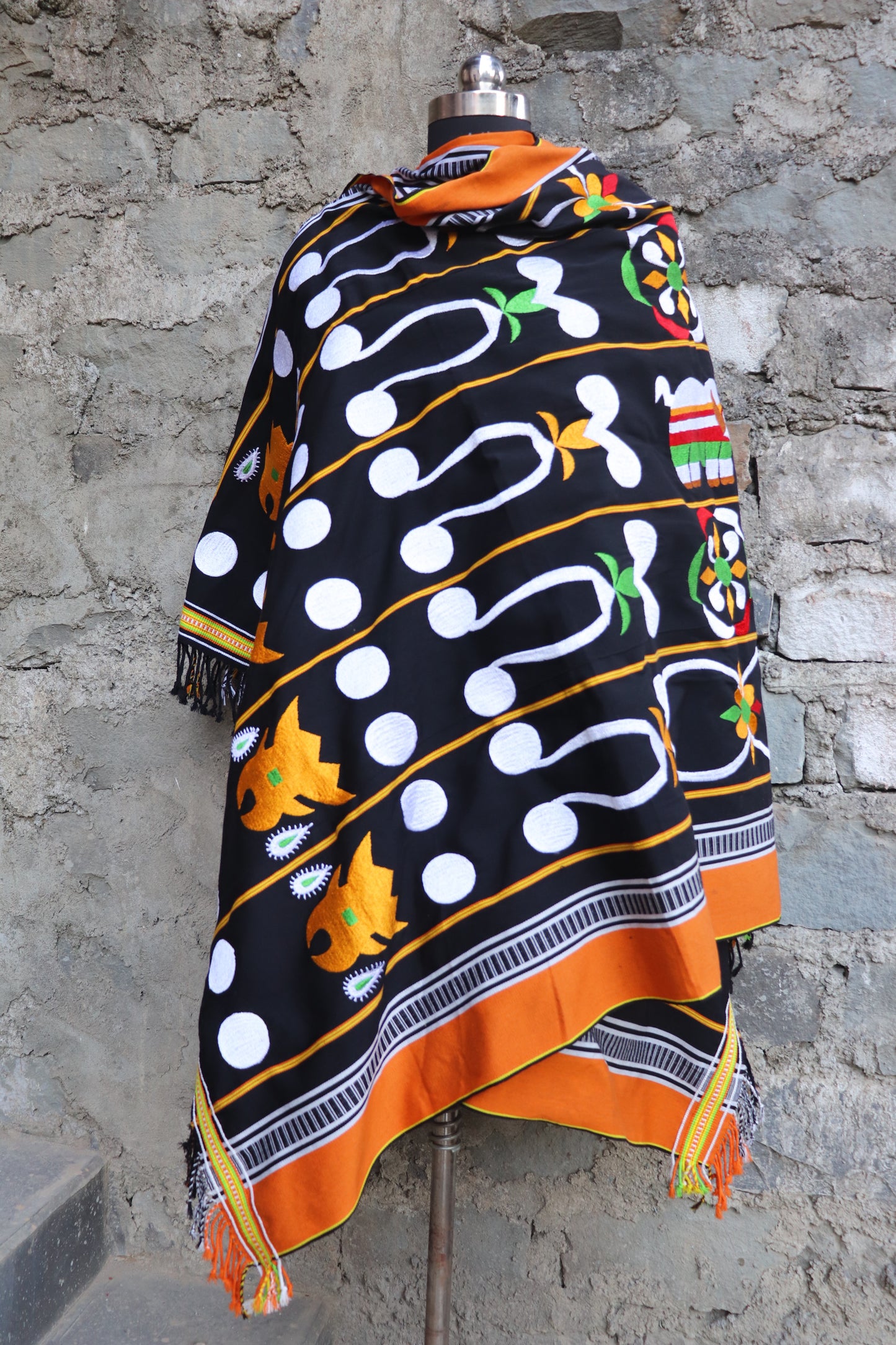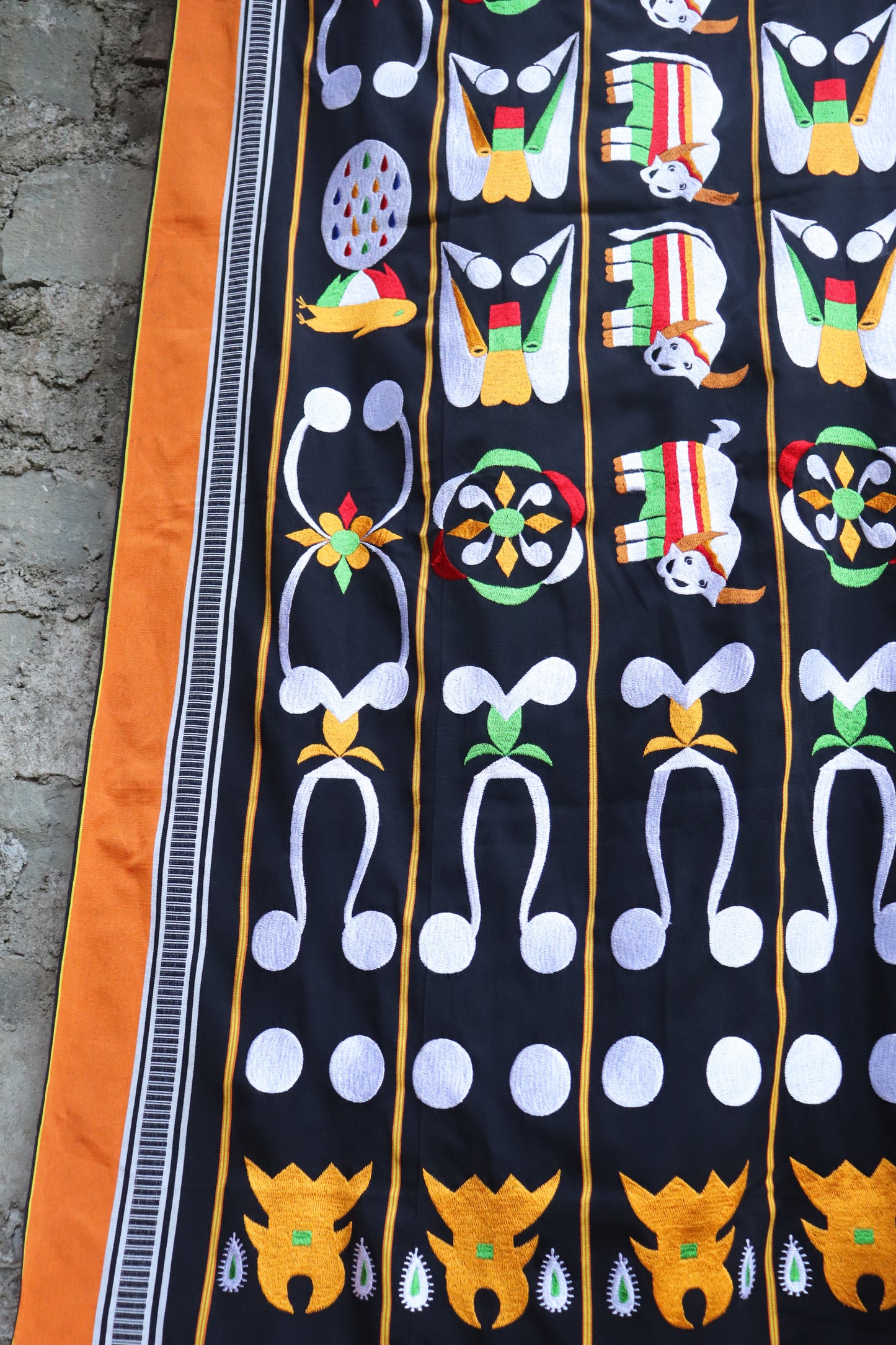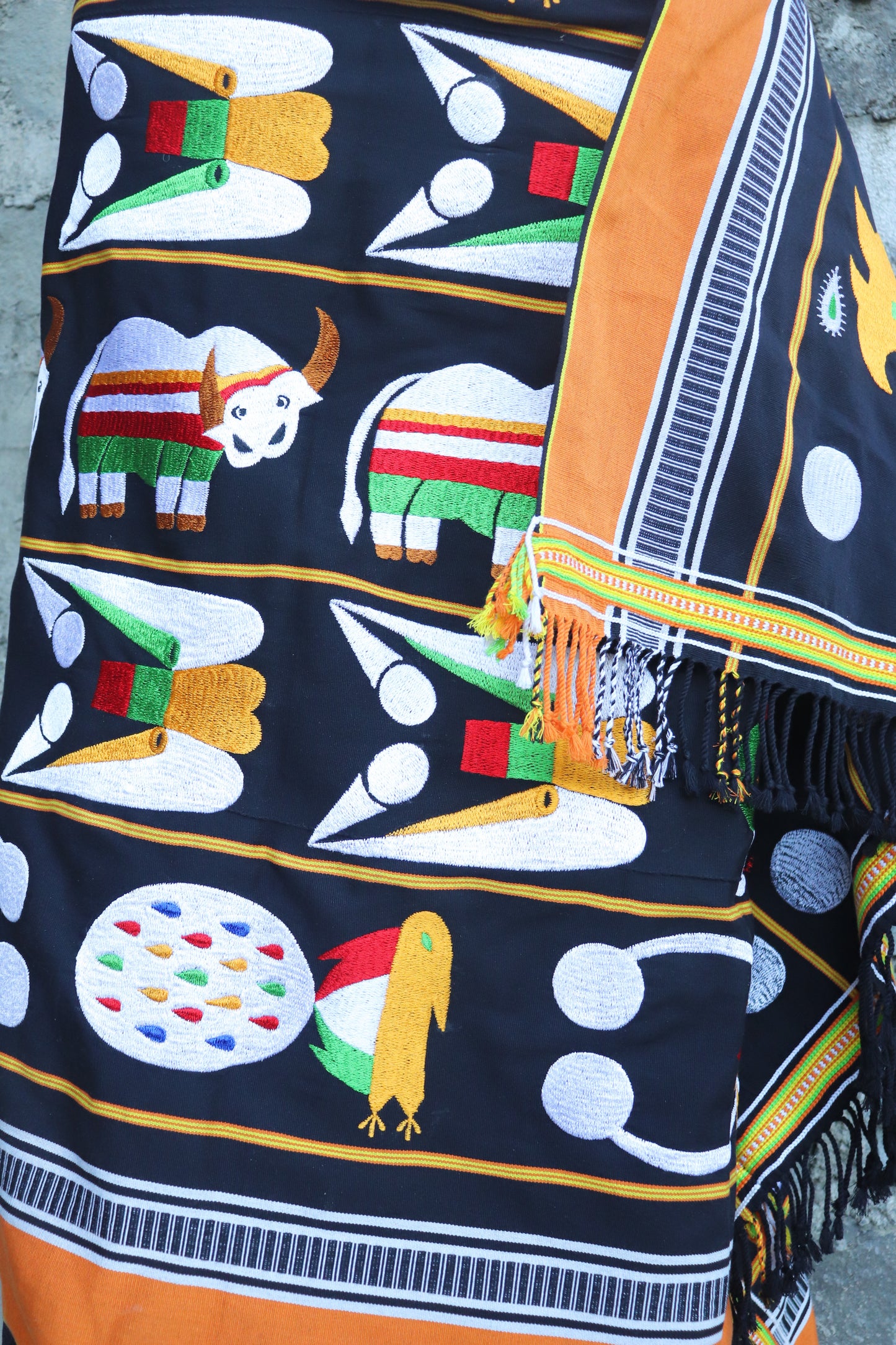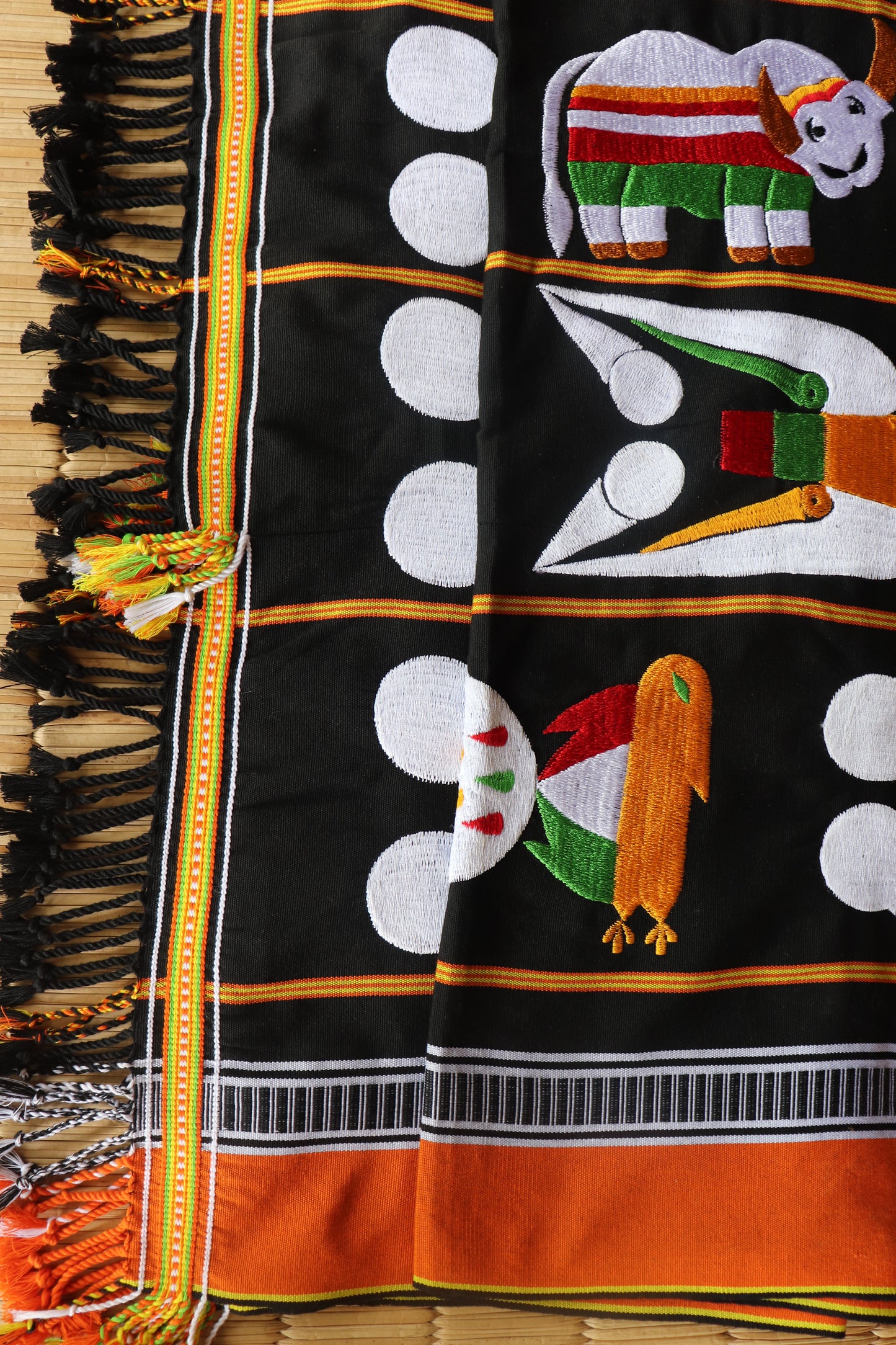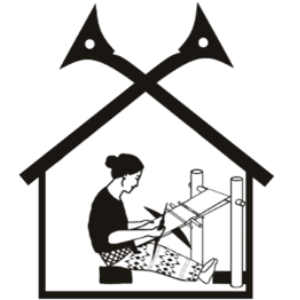Chizami Weaves
Traditional Men Shawl
Traditional Men Shawl
Couldn't load pickup availability
Low stock: 1 left
Shawl Name: THŰPIKHU/THSŰKETSURA/HAPIDASA
In the olden times, the rich would host feasts which were marked by abundance of meat and rice beer and some rituals of which all the villagers, and often a neighbouring village on invitation, would partake. This would have cost the would-be-host several years of hard work and thrift as a run-up preparation to the actual feast. Some types of feast would last for days particularly sükrünye/ tsükhenyie/ thürinye/ thuni which are observed for solid 10 days. The ‘Feast of merit’ is celebrated in this festival. Any one of these feast was no mean feat for a family whose economy primary rested on traditional methods of agriculture, and they had to host not one but two designated feasts of merit to earn the right to wear the shawl of the highest honour. Although, there are many exclusive shawls, they are usually confined to a village or two. However, the following two shawls namely, Thüpikhü/ Thsüketsura/ Hapidasa and Rüzakhü/Therükadiera/ Saparüdü are status symbols “badges of honour” common to most Chakhesang villages.
This shawl carries the highest honour and it symbolizes prosperity and generosity. Originally, this honour was bestowed on a couple who have performed all the designated feasts of merit.
The patterns with hues such as white, green, red, in the shawl indicates the person has earned.
These shawls contain motifs which signify their own importance. These explained below.
Elephant: The elephant pattern in the shawl symbolizes strength and abundance. It also signifies prosperity as the elephant eats little compared to its size and strength. The pattern represents powerful virtues and also symbolizes abundance of meat of any kind to be plentiful.
Mithun: Mithun is a traditionally reared animal. The mithun is highly valued above other species of animals during feasts. Any well to do family while hosting the ‘Feast of Merit’ to the entire village considers the mithun as the most preferred animal. The skulls of mithuns are preserved and used to decorate rich men’s house. The pattern of the mithun in the shawl symbolizes prosperity and wealth.
Animal head: Those who have performed the ‘Feast of Merit’ have the privilege of decorating ther entrance of their homes with the head of a mithun/buffalo carved in wood. As such, its significance richly blends with the honor that comes from performing this traditional rite and is therefore depicted in the shawl.
Star: Like a star in the sky, partakers of the celebration should be as bright as the star. The star also represents happiness and contentment. Further, just as the stars shines for everybody and as much as the flower blooms for the whole humanity, everybody is also equal in the true human approach.
Peacock: The shawl also carries the illustration of peacock to signify beauty and all those entitled to wear it would be as beautiful as this magnificent bird.
Flower: The flower signifies happiness and contentment shared among the people both rich and poor in partaking of the feast.
Butterfly: The butterfly represent good sprite because of its elegance, smartness, light and swift movements.
Sun/moon: The sun and moon signifies eternity
Pleats: The parallel pleats in between the shawl depict the status/milestone achieved after the toils and sweats.
# Source: Chakhesang Naga - Attires & Ornaments(2nd Edition) by Chakhesang Women Welfare Society
Care Instructions
To maintain the authenticity and longevity of your handwoven textile:
- Hand wash gently with cold water or dry clean
- Avoid harsh detergents and prolonged soaking
Material & Craftsmanship
- Material: Polyester
- Thread Count: 2/16
- Weaving Technique: Traditional back-strap (loin) loom
- Origin: Nagaland, India
Size: 45"x 82-86" Inches
Share
